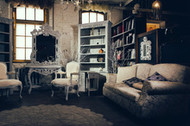Rococo and Baroque Styles Impact on French Design
20th Jan 2021

French designer furniture styles are beloved worldwide for their beauty and functionality, and their influence is evident in many other countries. For centuries, styles originating in France have influenced the furniture craftsmen that created solid wood furnishings, either painted or decorated with hand carvings.
Early on, in the Gothic-era, French-style furniture was mostly functional, characterized by strength and durability. Then, in the 14th century, more luxurious furniture found its way from the ecclesiastical environment into the secular world. Beginning in 1500, the French Renaissance produced country-style designer furniture that is still popular today. It marries “country” elements of rural life to the fancier design work found in urban homes.
Next came the Baroque era, corresponding to the reign of King Louis XIV. The Baroque introduced a majestic, royal-style of décor. French furniture was marked by grandeur, bold effects, and lavish ornament, with symmetrical and balanced ornamental details. Heavy upholstery was also a decorative and functional addition to the style of the time.
The Rococo period was from 1720 – 1755, and it introduced a more feminine sensibility, which is hugely popular in modern designer furniture. Rococo furniture is known for its curvy outlines and extravagant decorations, like the Baroque period. However, Rococo furniture is quite a bit more delicate and avoids symmetry. The simple lines of French Provincial furniture became more popular since the mid-1700s, as people began to enjoy cultured homes in rural areas, like Bordeaux. These elements were incorporated into what is known as the classic French designer furniture of today.

